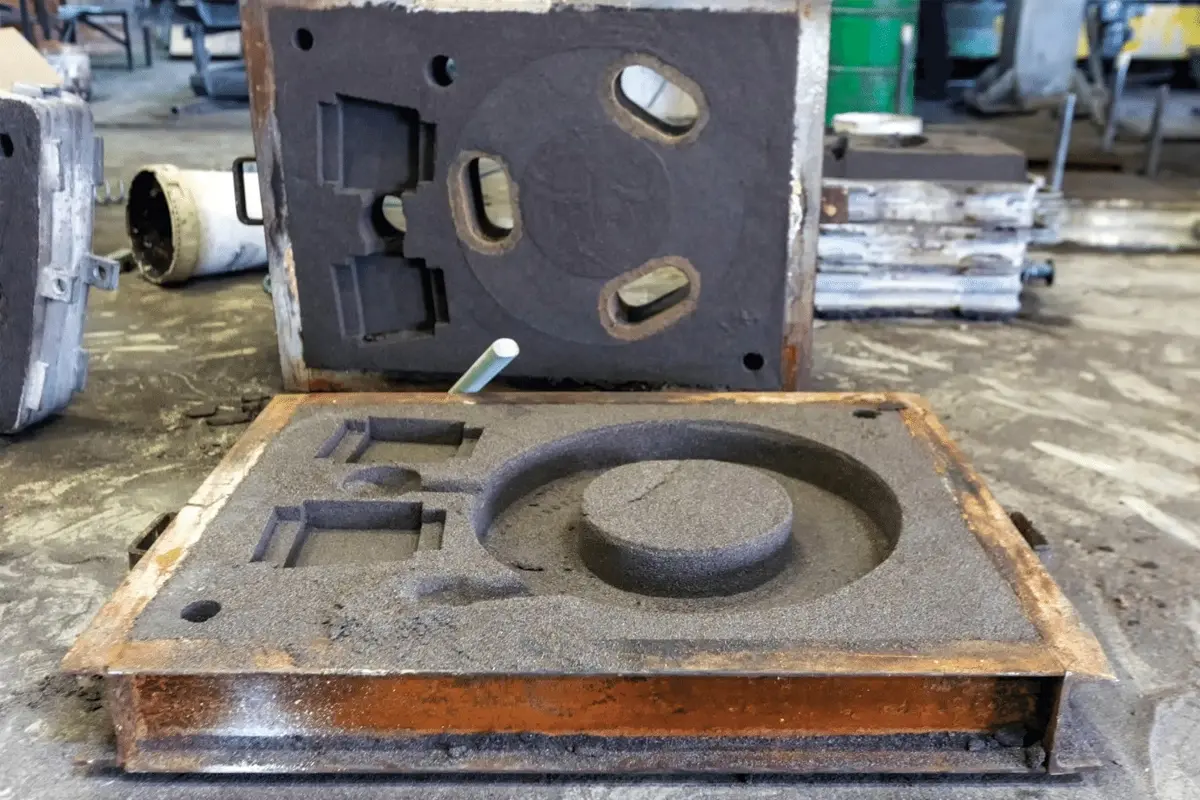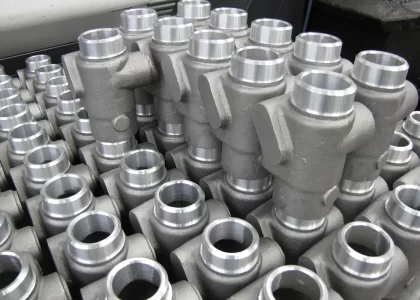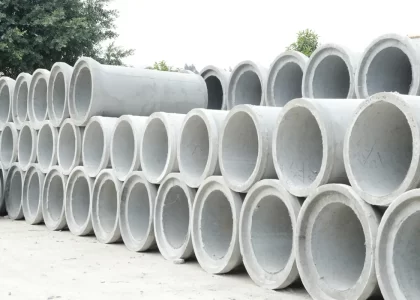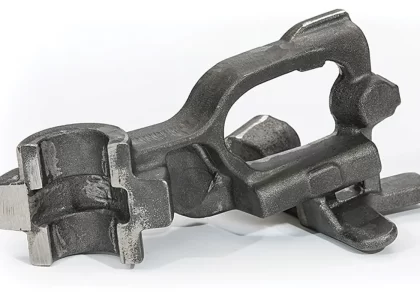WHAT MAKES Sand Die Casting
In sand casting, making a mold involves using a "pattern" to shape a cavity. This pattern, usually made from wood, plastic, or metal, is like a copy of the part you want to create. The mold has two halves, with the top called the "cope" and the bottom called the "drag," split in the middle. Wood patterns are the cheapest but can wear out quickly. Metal patterns are more expensive but are more accurate and last longer.There are various types of sand used, each suited for specific applications. When talking to suppliers, it’s important to ask about the sand’s characteristics and limitations.
Adding Cores for Complexity
For more complex parts, a “core” is needed. Cores are made from dried sand with a resin base and create internal spaces. After casting, the cores are taken out, leaving behind the shaped part.
Key Mold Components
The mold also includes a “Square,” “Gates,” “Runners,” and “Risers.” The Square is where molten metal is poured, the runner channels it to the gate, and the riser deals with excess metal.
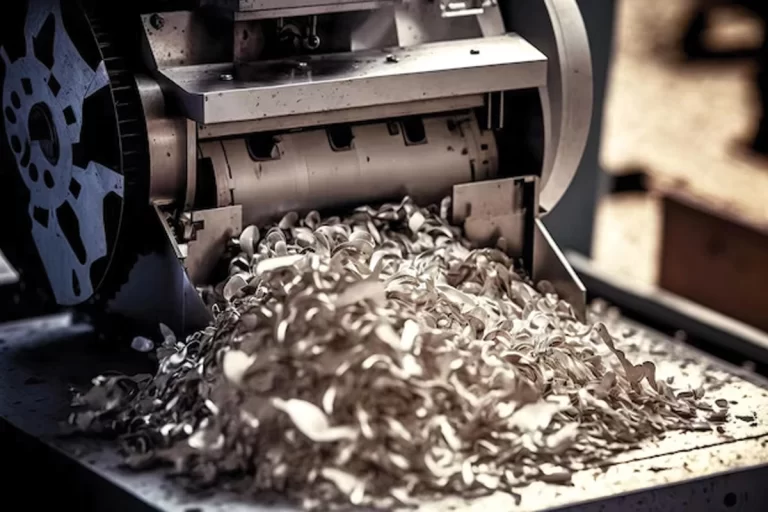
Step-By-Step Sand Die Casting Process
The mold starts with a flask on a flat surface. Half of the pattern is placed flat, creating the drag, and sand is packed to form the bottom half.: The top flask is put on, and the second half of the pattern is added on top, creating the cope. Sand is packed, completing the mold.
Forming the Cope
Taking Out the Pattern: The mold halves are separated, allowing the pattern to be taken out, leaving spaces for the casting.
Pouring the Metal: Molten metal is poured into the Square until it reaches the riser, ensuring a complete fill.
Cooling and Removing Excess Sand
: The cast cools down, excess sand is shaken out, and the finished part is taken out, along with the Square, Gates, Runners, and Risers.
Limitations Of Sand Die Casting
Limited Precision: Not highly precise; machining may be needed.
Requires Post-Casting Machining: Features like threads need additional machining.
Slow Production: Takes time, especially for large runs.
Challenging for Mass Production: Less efficient for productions exceeding 1000 pieces.
Flatness Control Issues: Difficulties in maintaining flatness.
Rough Surface Finish: The surface can be rough after casting.

